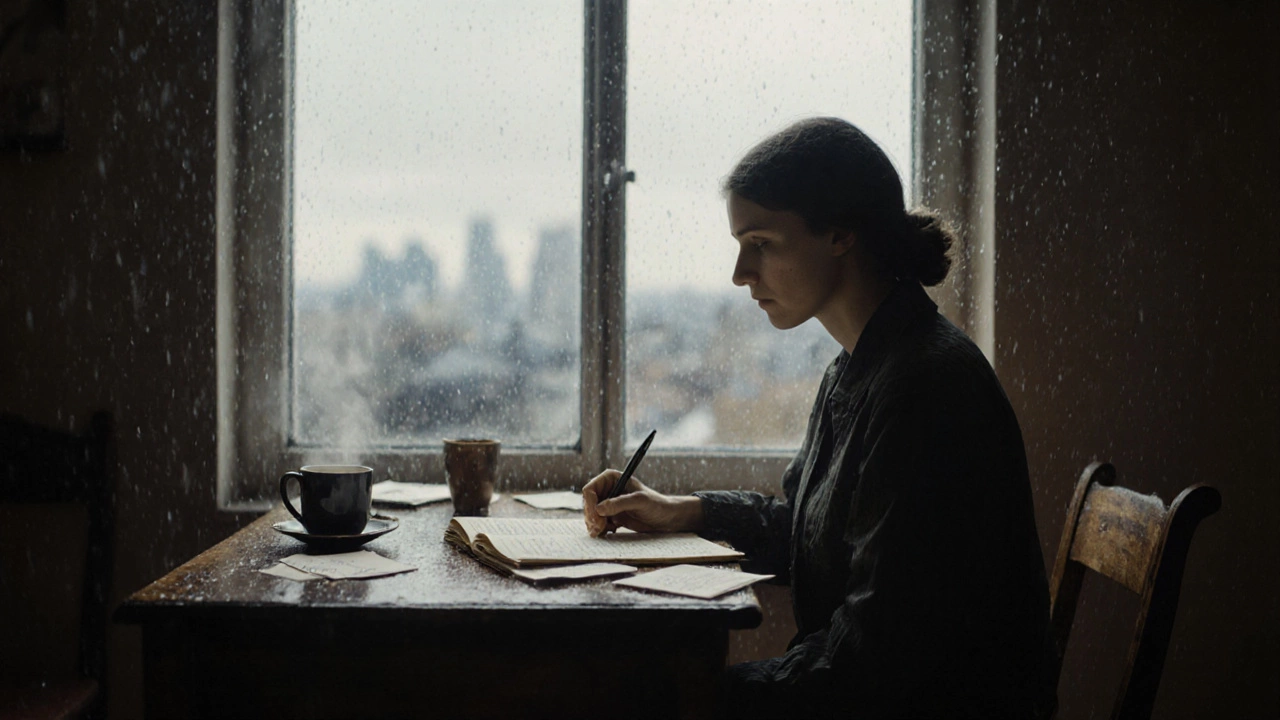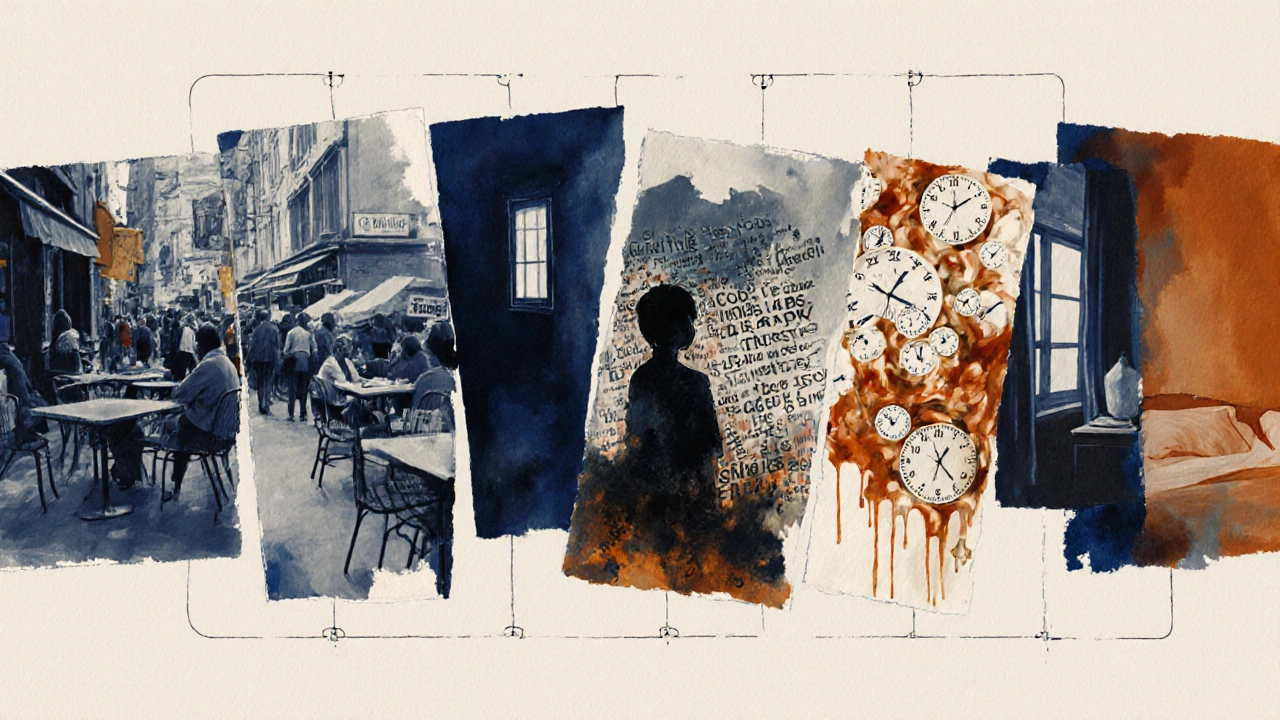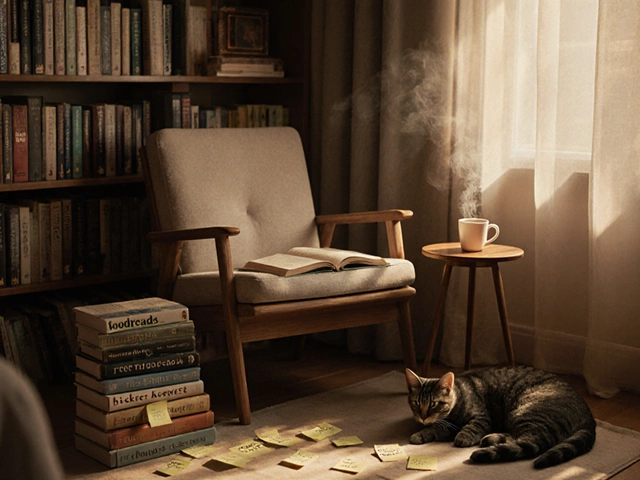
Literary Fiction Plot Identifier
This tool helps you distinguish between literary fiction and genre fiction by examining key plot elements. Select the features you notice in a story to see how they align with literary fiction characteristics.
Literary Fiction Features
- Character interiority and theme
- Non-linear, fragmented structure
- Deliberate, contemplative pacing
- Open-ended, ambiguous resolution
- Elevated, lyrical, symbolic language
Genre Fiction Features
- External goal or conflict
- Linear, three-act structure
- Fast, action-oriented pacing
- Clear, decisive resolution
- Plain, functional language
Quick Takeaways
- A literary fiction plot focuses on inner lives, themes, and subtle conflict rather than fast‑paced action.
- Character development and thematic depth drive the story forward.
- Typical structures include fragmented timelines, stream of consciousness, and open‑ended resolutions.
- Examples from contemporary and classic works illustrate how plot can serve ideas.
- Spotting a literary‑fiction plot means listening for what the characters think and feel, not just what they do.
When someone asks, “What is the plot of literary fiction?” they’re really trying to pin down why literary novels feel so different from a thriller or a romance. The answer lies in how literary writers treat story as a vehicle for ideas, mood, and the messy interior lives of their characters.
Literary fiction is a category of novels that prioritize style, theme, and character depth over conventional genre conventions. It often experiments with form and invites readers to reflect on larger questions about society, identity, or the human condition. Within this space, the plot refers to the sequence of events and emotional shifts that reveal characters’ inner worlds and thematic concerns rather than just moving the story from point A to point B.
How Literary Plots Differ From Genre Plots
Most readers are used to plot‑driven stories where a clear goal, obstacles, and a climax drive the narrative forward-think of a detective racing against time. Literary fiction flips that script. The character development captures the gradual, often subtle changes in a person’s beliefs, emotions, or relationships becomes the engine. Conflict may be internal, cultural, or philosophical, and its resolution can stay ambiguous.
To illustrate, consider the difference between a fast‑paced crime novel and a novel like Mrs. Dalloway by Virginia Woolf. The crime novel’s plot is a tidy ladder: crime → investigation → showdown. Woolf’s novel, by contrast, stretches a single day into a rich tapestry of memories, moods, and social commentary-its “action” is the protagonist’s mental navigation of past and present.
Core Elements of a Literary‑Fiction Plot
Even though literary fiction eschews formulaic beats, most stories still contain a recognisable skeleton. Below are the building blocks you’ll find in the best examples.
- Inciting Moment: Not always a dramatic incident; it can be a quiet realization, a lingering regret, or a chance encounter that nudges the protagonist into reflection.
- Internal Conflict: The tug‑of‑war between desire, duty, or identity. This is often more pronounced than external obstacles.
- Thematic Thread: A recurring idea-such as alienation, memory, or moral ambiguity-that ties scenes together.
- Fragmented Structure: Chapters may shift in time, point of view, or style, mirroring the way thoughts drift.
- Open‑Ended Resolution: The story may end with a question rather than a neat answer, leaving space for the reader to interpret.
These elements work together to create a plot that feels like a conversation with the reader rather than a roller‑coaster ride.

Stylistic Techniques That Shape the Plot
Literary authors often use form to reinforce meaning. Here are three common techniques and how they affect the plot.
- Stream of consciousness writes a character’s thoughts in a flowing, unpunctuated style, blurring the line between interior monologue and external action-think James Joyce’s Ulysses. The plot becomes the rhythm of thought rather than a series of events.
- Non‑linear timeline jumps back and forth across years or decades, allowing the author to reveal cause and effect gradually. This can make the plot feel like a puzzle you piece together.
- Realism grounds the story in everyday details, making the inner lives of characters feel authentic. The plot relies on subtle gestures-a glance, a paused breath-to signal change.
Real‑World Examples of Literary‑Fiction Plots
Seeing the concepts in action helps cement what a literary plot looks like. Below are short snapshots from five well‑known works.
- “The Road” by Cormac McCarthy - The inciting moment is the aftermath of an unnamed apocalypse. The plot follows a father and son’s trek, but the real thrust is their emotional bond and the moral questions about hope.
- “Atonement” by Ian McEwan - A childhood misunderstanding sets off a chain of guilt that haunts the narrator for decades. The plot’s structure jumps between wartime, post‑war, and a metafictional confession.
- “Never Let Me Go” by Kazuo Ishiguro - The revelation that the protagonists are clones built for organ donation is the inciting crisis. The plot explores acceptance, love, and the ethics of humanity.
- “The Goldfinch” by Donna Tartt - A museum explosion triggers a lifelong quest for identity. The plot is less about solving a mystery and more about how trauma reshapes values.
- “Beloved” by Toni Morrison - The haunting of a former enslaved woman’s house forces her to confront the past. The plot weaves memory, supernatural elements, and the legacy of slavery.
Notice the common thread: each story uses events as a springboard for deeper introspection, not as a series of puzzles to be solved.
Spotting a Literary‑Fiction Plot in the Wild
Want to know if a book you’re eyeing belongs to this camp? Ask yourself these quick checks.
- Does the book promise a “journey of self‑discovery,” “exploration of memory,” or “study of society” on its cover?
- Are there long passages that linger on sensory detail or internal monologue?
- Is the ending more thought‑provoking than satisfying?
- Do reviews highlight language, symbolism, or thematic depth?
If the answer is mostly “yes,” you’re likely dealing with a literary‑fiction plot.

Comparison: Literary‑Fiction Plot vs. Genre Plot
| Aspect | Literary‑Fiction Plot | Genre Plot |
|---|---|---|
| Primary Driver | Character interiority and theme | External goal or conflict |
| Structure | Often non‑linear, fragmented | Linear, three‑act |
| Pacing | Deliberate, contemplative | Fast, action‑oriented |
| Resolution | Open‑ended, ambiguous | Clear, decisive |
| Language | Elevated, lyrical, symbolic | Plain, functional |
Common Pitfalls When Writing Literary Plots
Even seasoned authors can slip into traps that dilute the literary impact.
- Over‑decorating: Fancy language without purpose can feel pretentious.
- Neglecting narrative momentum: Too much introspection without any sense of change can stall the reader.
- Vague themes: If the story hints at a big idea but never clarifies it, the plot feels hollow.
- Under‑developed characters: A plot about inner life needs fully realized, contradictory personalities.
A good rule of thumb is to ask, “Does this passage move the character’s understanding forward?” If the answer is no, trim or reshape it.
Key Takeaway Checklist
- Identify the inciting moment that sparks internal conflict.
- Map out the thematic thread you want to weave.
- Choose a structural technique (stream of consciousness, non‑linear, etc.) that matches the theme.
- Craft an ending that leaves space for reader interpretation.
- Revise for language that serves the story, not the other way around.
Frequently Asked Questions
What distinguishes a literary‑fiction plot from a typical story plot?
A literary‑fiction plot foregrounds character interiority, thematic depth, and often experiments with structure, whereas a typical story plot focuses on external goals, clear obstacles, and a tidy resolution.
Can a literary novel have a fast‑paced plot?
Yes, but the speed usually serves a larger purpose-such as heightening emotional intensity or underscoring a theme-rather than simply driving action.
How do I identify a literary‑fiction plot when choosing my next read?
Look for blurbs that mention “character study,” “explores memory,” or “delivers a lyrical narrative.” Reviews that focus on language, symbolism, or emotional depth are also clues.
Are there any classic novels that perfectly illustrate a literary‑fiction plot?
Works like Virginia Woolf’s Mrs. Dalloway, James Joyce’s Ulysses, and Toni Morrison’s Beloved showcase how plot can be woven from interior moments, fragmented time, and thematic resonance.
What are some common mistakes to avoid when writing a literary‑fiction plot?
Typical slip‑ups include over‑decorating language without purpose, neglecting any sense of narrative momentum, and leaving themes so vague that readers can’t latch onto them.


